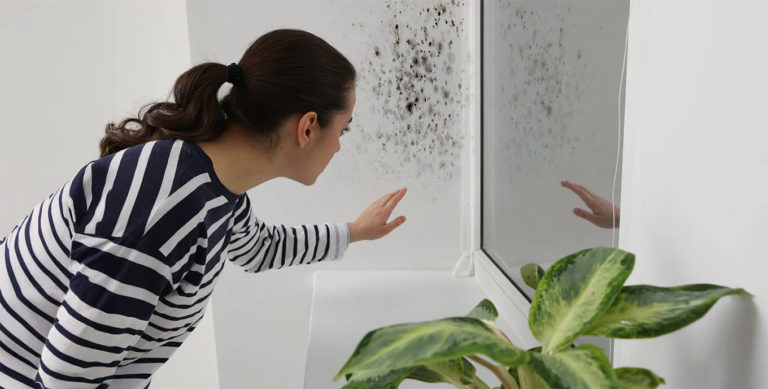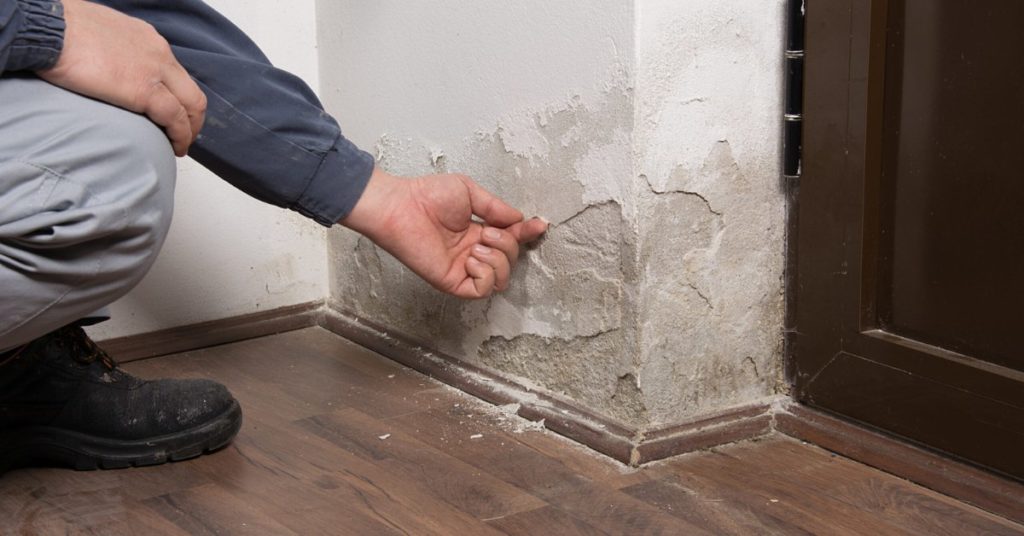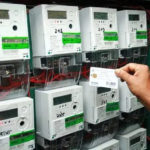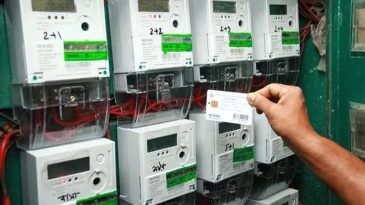- General
- Updated on July 4, 2025
Monsoon Mildew Prevention: Keep Your Indian Home Dry & Fresh

When the monsoon arrives, so does the dampness–and with it, the risk of mold and mildew invading your home. Excess moisture not only damages walls and furnishings but also harms indoor air quality, triggering allergies and respiratory issues. Fortunately, a few strategic habits and low-cost solutions can keep your living spaces dry, fresh, and healthy all season long. In this guide, we’ll explore practical, India-specific tips to prevent monsoon mildew, from optimizing ventilation to deploying natural dehumidifiers and mold-resistant materials.
Understanding Monsoon Mildew and Its Causes

Mildew thrives in humid environments, feeding on organic materials like wood, paper, and fabrics. During India’s monsoon, relative humidity often soars above 80%, creating ideal conditions for mildew growth on bathroom tiles, kitchen cabinets, wardrobes, and even bookshelves. Poor air circulation and condensation on cold surfaces accelerate the problem, turning once-bright walls into spotted, musty patches.
Preventing mildew starts with controlling moisture sources. Common culprits include wet clothes drying indoors, stagnant water in potted plants, leaky roofs, and sealed windows that trap humid air. By identifying and reducing these moisture hotspots, you can break the mildew life cycle before it begins.
Promote Cross-Ventilation in Every Room
Natural ventilation is your first line of defense against indoor dampness. By allowing fresh air to flow freely, you dilute humid air and help surfaces dry more quickly.
In living areas, open windows on opposite walls whenever rain permits. Install louvered vents above windows or in upper portions of doors to facilitate a steady flow of air even when windows are closed. In bathrooms and kitchens, exhaust fans rated for high humidity are invaluable. Choose models with automatic humidity sensors so they run only when needed, conserving energy while keeping moisture in check.
Deploy Natural Dehumidifiers
Chemical dehumidifiers can be costly and require electricity, but natural alternatives are both eco-friendly and budget-friendly:
- Rock Salt (Sendha Namak): Place coarse rock salt in open containers around damp corners. Salt absorbs moisture from the air; replace every few days as it clumps.
- Baking Soda: A box of baking soda tucked inside closets or cupboards neutralizes humidity and odors. Refresh monthly.
- Charcoal Briquettes: Activated charcoal packets draw in moisture and impurities. Use in shoe racks, under sinks, or in tight cupboards.
For larger spaces, consider silica gel sachets or calcium chloride crystals available at hardware stores. These can absorb significant moisture and are easy to refresh in the sun.
Keep Wardrobes and Fabrics Mold-Free
Closets and fabric items are prime targets for mildew. Implement these simple habits:
- Line shelves with moisture-wicking cedar mats or bamboo liners to discourage dampness.
- Store seldom-worn clothes in breathable cotton bags rather than plastic, which traps moisture.
- Sprinkle a few drops of neem or eucalyptus oil on cotton balls and place them in drawers; these natural antimicrobials inhibit mold growth.
- Rotate and air out heavy blankets and seasonal clothes on sunny days whenever the rain pauses.
For delicate fabrics, a short tumble in the dryer (on low heat) or a quick steam press after airing can eliminate residual moisture.
Seal and Insulate to Combat Condensation
Condensation forms on cool surfaces like glass windows, tile walls, and metal fixtures. Over time, these droplets create breeding grounds for mildew.
- Weather-Strip Windows and Doors: Apply self-adhesive silicone or rubber strips to block humid air infiltration.
- Upgrade to Double-Glazed Windows: These reduce temperature differentials and minimize condensation build-up on glass.
- Use Mold-Resistant Paint: Specialized paints contain antimicrobial agents that resist mildew on walls and ceilings. Ideal for bathrooms and kitchens.
- Insulated Piping: Wrap exposed cold water pipes with foam insulation to prevent water from condensing on their surfaces.
These sealing and insulation steps not only control moisture but also improve energy efficiency, keeping your home cooler in summer and warmer in winter.
Embrace Smart Cleaning and Maintenance Routines
Regular cleaning removes spores before they become visible mold. For a mildew-resistant routine:
- Wipe down bathroom tiles, shower doors, and kitchen backsplashes with a vinegar-water solution (1:1 ratio) at least once a week. Vinegar’s acidity kills mold spores and prevents regrowth.
- Clean grout lines using a paste of baking soda and water, scrubbing with an old toothbrush. Rinse thoroughly to remove residue.
- Check for and repair leaks promptly. Inspect roofs, gutters, and plumbing joints each month during monsoon. A small drip left unattended can lead to major mold issues.
- Wash bathroom mats, towels, and shower curtains weekly, allowing them to dry fully in sunlight or under a fan.
Consistent maintenance keeps mildew from taking hold and keeps surfaces looking fresh.
Leverage Technology for Humidity Control
For homes facing persistent humidity challenges, affordable technology can automate moisture management:
- Digital Hygrometers: Place these in key areas to monitor real-time humidity levels. Aim to keep indoor RH between 40–60%.
- Portable Dehumidifiers: Compact units with 10–20 liter extraction capacity can dry rooms overnight. Look for Energy Star–rated models for efficiency.
- Smart Exhaust Fans and AC Units: Many modern HVAC systems include humidity sensors and automatically adjust fan speeds or trigger dehumidification cycles when moisture rises.
Integrating these devices provides hands-free prevention, ensuring your home stays dry even during weeks of non-stop rain.
Cultivate a Mold-Resistant Mindset
Staying ahead of monsoon mildew requires consistent habits. Make moisture control part of your daily routine:
- After showers or cooking, run exhaust fans or open windows.
- Check and empty natural dehumidifiers every few days.
- Air out seldom-used rooms by opening doors and windows whenever possible.
- Keep cleaning supplies—vinegar, baking soda, microfiber cloths—handy for quick wipe-downs.
By adopting these drip-to-drop practices, you transform mildew prevention from a daunting task into simple, automated habits that keep your home fresh year after year.
Read Also : Hair Care Tips During Monsoon
Conclusion
India’s monsoon brings welcome relief from summer heat but also ushers in persistent dampness and mildew risk. By promoting cross-ventilation, deploying natural dehumidifiers, managing fabrics properly, sealing and insulating vulnerable surfaces, and adopting regular cleaning and maintenance routines, you can stay one step ahead of mold. Leverage smart humidity-control devices where needed, and cultivate daily habits that prioritize dryness. With these simple, India-tailored tips, your home will remain a sanctuary free from monsoon moisture, ensuring healthier air and happier living spaces no matter how heavy the rains.
Join the discussion
Related Articles
No results available
ResetTrending Articles


- General
- Updated on December 5, 2025


- General
- Updated on December 2, 2025


- General
- Updated on December 5, 2025


- General
- Updated on November 27, 2025


- Health
- Updated on November 24, 2025


- General
- Updated on November 24, 2025


- General
- Updated on November 19, 2025


- General
- Updated on November 19, 2025


- General
- Updated on November 14, 2025


- Tech
- Updated on November 12, 2025
No results available
Reset


